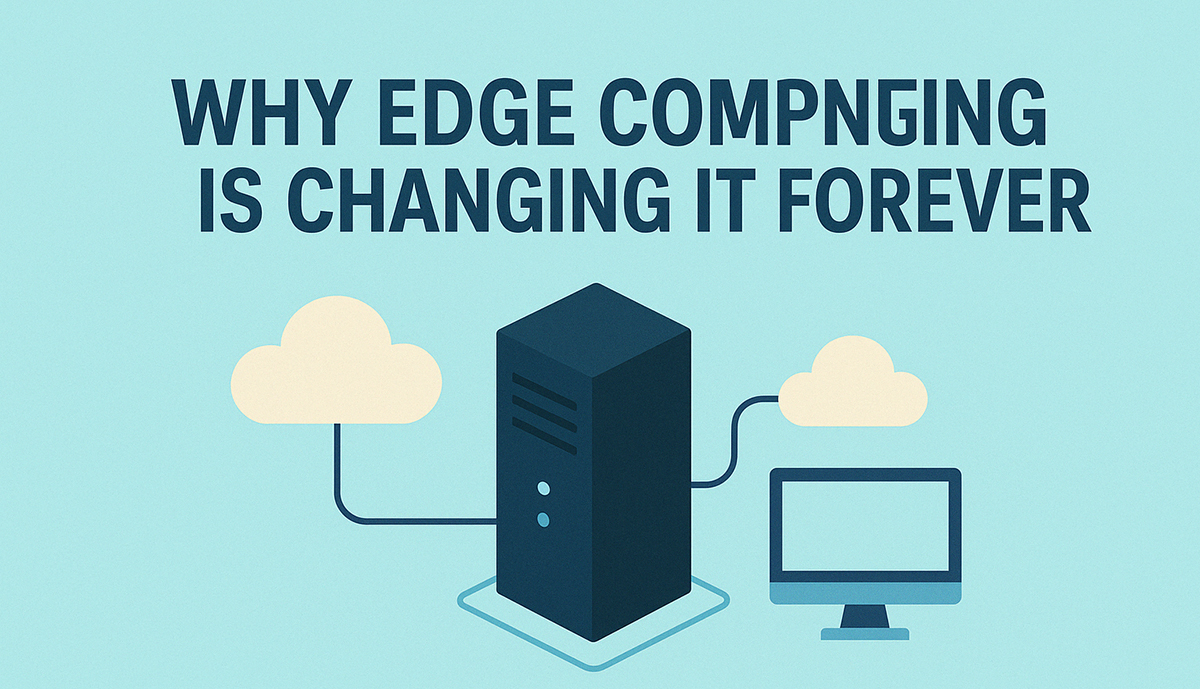 The Future of IT Infrastructure Is Edge Computing
The Future of IT Infrastructure Is Edge Computing
In an age where data is currency and speed is the new standard, IT infrastructure is undergoing a seismic transformation. At the forefront of this evolution is edge computing—a decentralized model that places processing power closer to where data is generated. This shift is not merely a trend but a fundamental reshaping of how technology is built, deployed, and optimized.
Understanding the Shift: Why IT Infrastructure Is Evolving
Traditional IT architectures, reliant on centralized data centers and cloud models, are beginning to show their limitations. Latency issues, bandwidth constraints, and the growing demand for real-time data processing are challenging the status quo. The digital ecosystem needs something faster, smarter, and more localized. Enter edge computing.
The Rise of Edge Computing in a Hyperconnected World
With billions of IoT devices and a surging demand for instantaneous digital experiences, the edge has emerged as the answer. Whether it’s autonomous vehicles, remote industrial monitoring, or immersive gaming, edge computing delivers the responsiveness today’s applications require.
What Is Edge Computing?
Breaking Down the Basics of Edge Computing Edge computing is a distributed computing paradigm that pushes data processing closer to the source—think sensors, smartphones, or industrial machines. Instead of transmitting data to a faraway cloud, the edge processes it locally, enabling rapid responses and reduced dependency on centralized systems.
How Edge Differs from Traditional Cloud Infrastructure While cloud computing centralizes processing in large data centers, edge computing decentralizes it. This distinction allows edge to provide faster data handling, lower latency, and greater resilience in environments where every millisecond counts.
Why the Buzz? The Core Benefits of Edge Computing
Low Latency, High Speed: Processing Data at the Source Time-sensitive applications thrive on edge computing. By reducing the distance data travels, edge slashes latency, resulting in split-second decision-making—crucial for sectors like healthcare and autonomous transport.
Reducing Bandwidth and Operational Costs at the Edge Processing data locally means less reliance on upstream cloud or data center connectivity. This not only alleviates bandwidth consumption but also cuts down on cloud-related costs, making operations leaner.
Boosting Security by Keeping Data Close By minimizing data transmission across networks, edge computing reduces exposure to cyber threats. Sensitive data can remain within a localized environment, enhancing privacy and compliance.
Real-World Use Cases Driving Edge Adoption
Smart Cities, Smarter Infrastructure Traffic control systems, smart lighting, waste management, and public safety networks are leveraging edge computing to operate more efficiently and respond dynamically to real-time events.
Edge in Healthcare: Real-Time Patient Data and Monitoring From connected medical devices to remote surgeries, edge computing empowers healthcare providers to monitor patients in real time, ensuring timely interventions and better outcomes.
Retail, Manufacturing, and the Edge Advantage Retailers are using edge to enhance customer experiences through personalized promotions and real-time inventory management. In manufacturing, edge supports predictive maintenance, automation, and quality control.
Where Edge Wins and Where Cloud Still Rules Edge shines in real-time, localized computing, while cloud remains ideal for heavy data storage and large-scale analytics. The two are complementary—each suited to different layers of IT strategy.
Hybrid Models: Building a Unified Edge-Cloud Strategy Forward-thinking organizations are blending edge and cloud into hybrid models. This approach allows seamless data flow, greater flexibility, and the ability to scale services dynamically.
The Role of 5G in Accelerating Edge Computing
Faster Networks Enabling Faster Decisions 5G’s ultra-low latency and high-speed connectivity turbocharge edge computing. The synergy between 5G and edge enables mission-critical applications to function in near real-time.
How 5G and Edge Power IoT and AI Applications Together, 5G and edge unlock the full potential of IoT and AI—enabling smart grids, intelligent transportation, and real-time analytics at the network’s edge.
Challenges on the Road to Edge Integration
Edge computing, despite its promising capabilities, is confronted with obstacles concerning scalability, standardization, and security. Scaling distributed infrastructure, lack of standardized protocols, and evolving cybersecurity threats require ongoing innovation and vigilance.
Infrastructure Management at Scale:
What Needs to Change Managing thousands of edge nodes demands robust orchestration tools, autonomous management systems, and simplified deployment models.
Key Technologies Powering Edge Computing
Micro Data Centers and Edge Gateways Explained
Compact, modular micro data centers and intelligent edge gateways form the physical backbone of edge infrastructure—bringing power, cooling, and compute closer to endpoints.
AI, IoT, and Real-Time Analytics at the Edge
Edge is where AI meets action. Processing AI-driven insights on-site enhances efficiency, reduces response times, and minimizes network strain.
How Edge Computing Is Reshaping IT Roles and Teams
New Skills in Demand:
From Network Engineers to Edge Architects The rise of edge demands new expertise. Skills in distributed systems, cybersecurity, and data orchestration are becoming crucial for IT teams.
Decentralized IT:
Empowering Teams at Every Node IT is no longer confined to central hubs. Edge computing decentralizes responsibility and empowers local teams to manage and respond to infrastructure in real time.
Future Trends: Where Is Edge Computing Headed?
The Rise of Edge-Native Applications
Expect to see a new generation of applications built specifically for the edge—lightweight, responsive, and designed to thrive in decentralized environments.
Sustainability and Energy Efficiency at the Edge
With greener micro data centers and energy-conscious architectures, edge computing can drive more sustainable IT practices
Conclusion
Why the Future of IT Infrastructure Truly Is Edge Computing Edge computing addresses the pressing needs of modern digital environments—speed, security, scalability, and intelligence. It’s not just the future—it’s the foundation for what’s next.
Next Steps for Organizations Embracing the Edge Revolution Organizations must evaluate their workloads, identify latency-sensitive operations, and design a hybrid edge-cloud strategy to stay competitive in an increasingly distributed digital world.
Join us on social media to receive the most recent updates! Facebook, Twitter, and LinkedIn
Check out our newest blog entry (Server Virtualization Drives Modern Business)
Subscribe to get free blog content to your Inbox [email-subscribers-form id=”1″]
-
Previous Post
Load Balancing Made Simple and Effective




